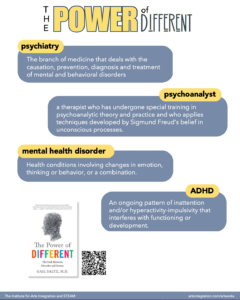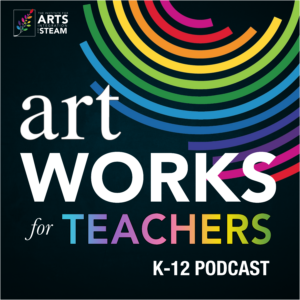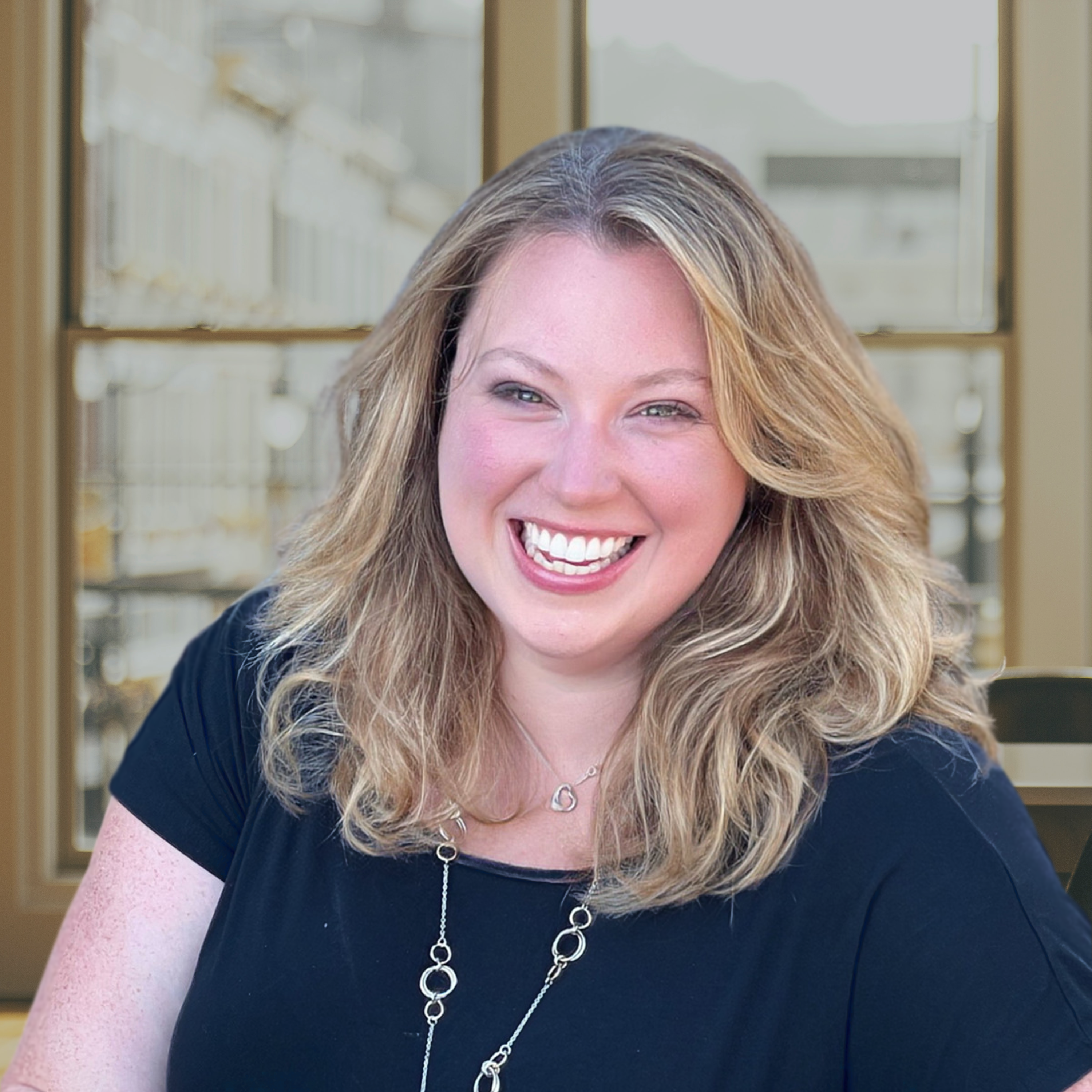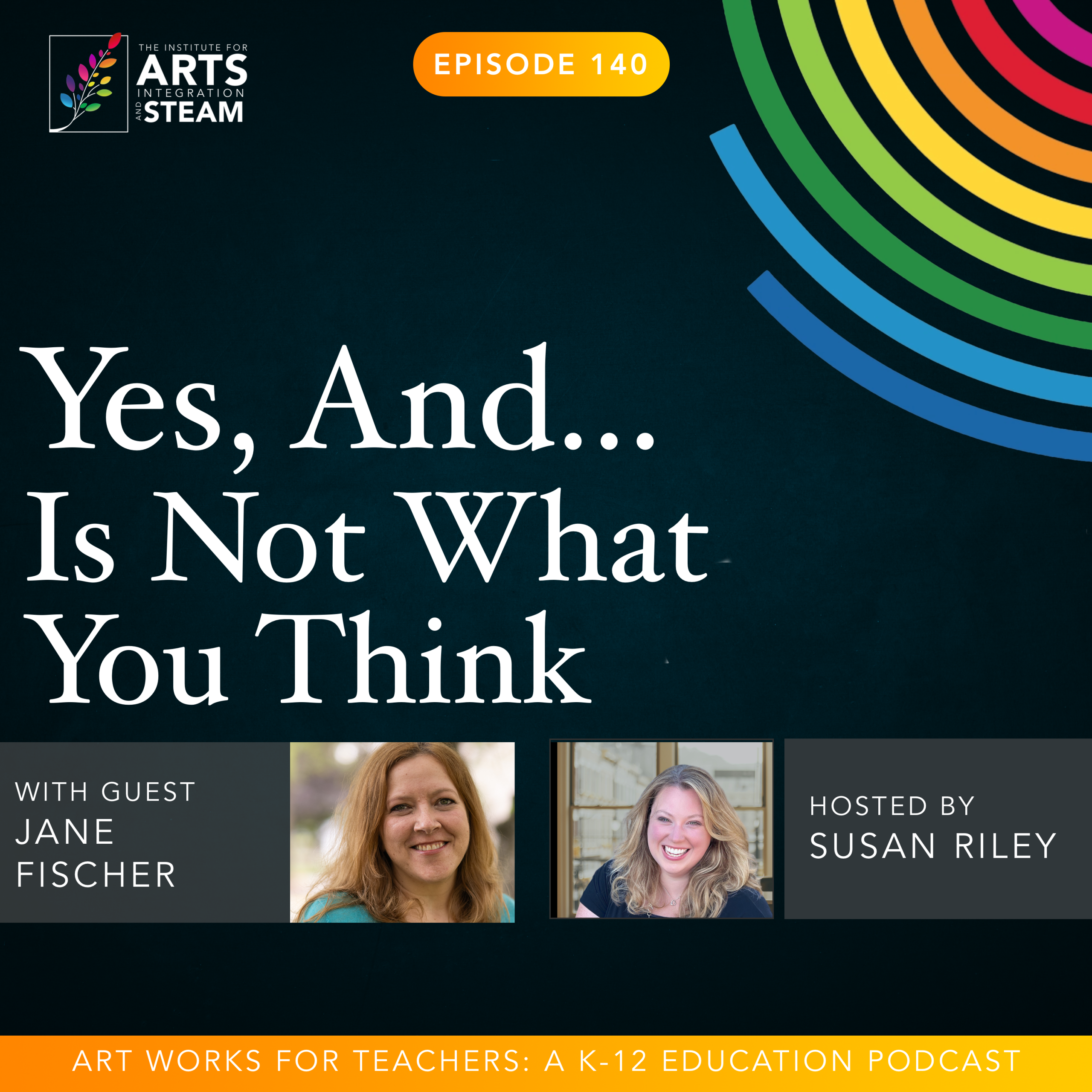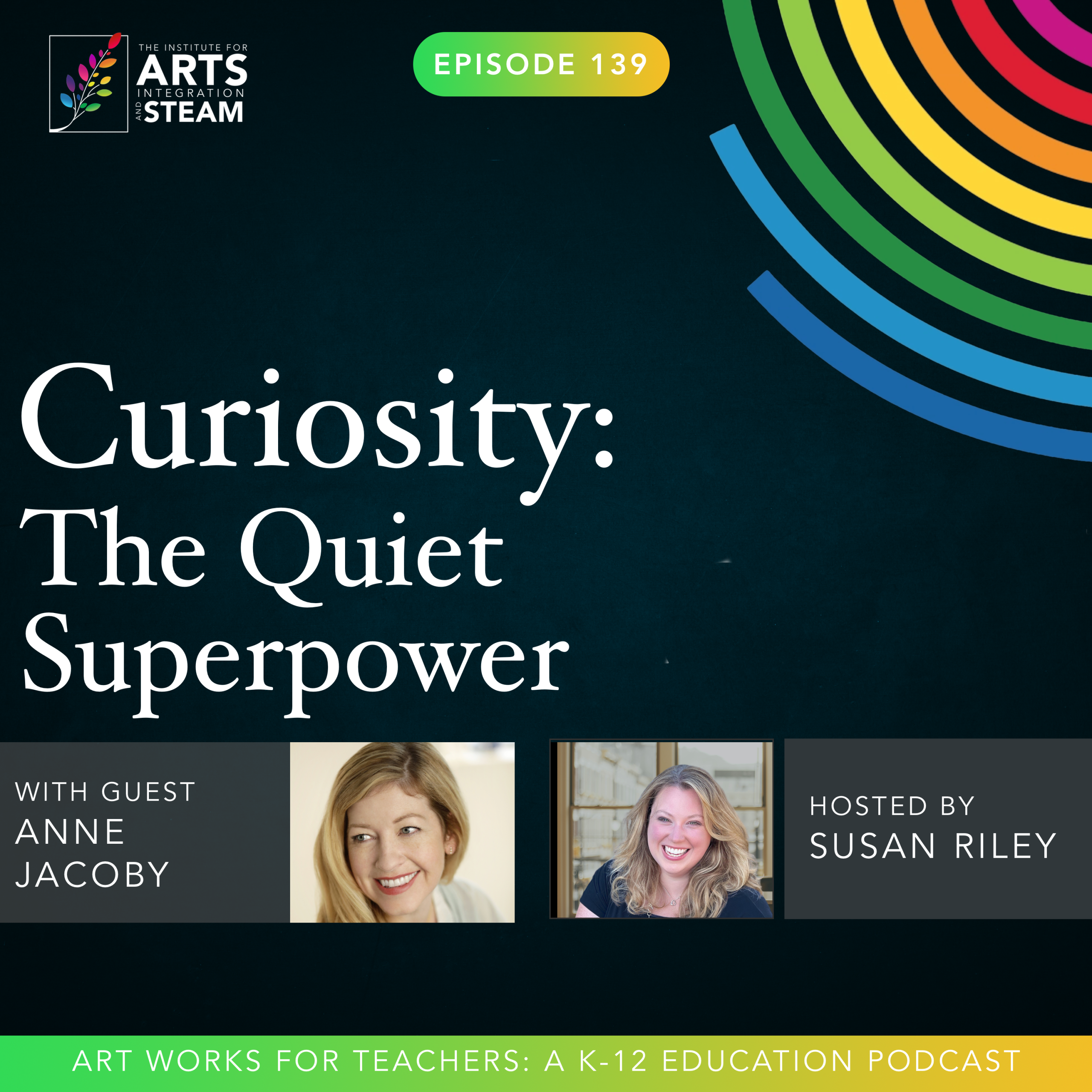ART WORKS FOR TEACHERS PODCAST | EPISODE 033 | 32:17 MIN
The Power of Different
Enjoy this free download of The Power of Different resource.
Susan
Hi there, Gail. Thank you so much for joining us today.
Gail
Thanks for having me.
Susan
Awesome. So for anyone who may not be familiar with you and your work, can you please share a little bit about yourself and your background?
Gail
Yeah, that’s fair because I think actually educators have been sort of a newer audience for me because typically educators are not checking out what psychiatrists are doing per se. But I am a clinical associate professor of psychiatry at the New York Presbyterian Hospital in the Weill Cornell Medical Center and I’m a psychoanalyst at the New York Psychoanalytic Institute. And I am a TV contributor, I guess generally media contributor.
I host a couple of podcasts. I have written a number of books. I interact often about topics that have to do with psychologically what’s happening in the news, general mental health, relationship issues, family issues, parenting. So all manner of things related to psychiatry and mental health.
Susan
Which is wonderful and it’s honestly it’s um and there’s a reason maybe that educators weren’t so familiar but are becoming maybe more familiar with you and your work. For those who maybe the term psychoanalyst sounds scary, what does that actually mean? So what what do you investigate and kind of and look at?
Gail
Right. Well, so a psychiatrist is somebody who’s gone to medical school and looks at, you know, treats people for psychiatric illnesses, which simply means, in my opinion, some different wiring in the brain. I might add we all have different wiring. We all have different wiring. But some people’s wiring sets them up to have particular symptoms.
And if they have enough symptoms in what we have arbitrarily made a bucket that we call a diagnostic term from the DSM-5, which again, in my opinion, is the best we have right now. Isn’t hopefully we’re going to end up because it’s woefully insufficient, but we use it because it allows us to get insurance reimbursement and other important things in society like paying for treatment.
But a psychiatrist will hopefully try to understand, in terms of brain wiring, what is going on, and then treat. And treatment a psychiatrist can do can be in the form of psychotherapies, but also medication. And psychiatrists are the only group of mental health professionals that can prescribe medication. Psychoanalysts, which is the training that I did after I finished my residency in psychiatry, is a particular form of psychotherapy. Really, it’s the original form of talk therapy, you know, that Sigmund Freud developed but has changed extensively since those days.
And it’s really about understanding that we all have a dynamic unconscious. We have things that go on in our minds that are out of our awareness. And as long as they stay out of our awareness, they have the potential to affect our behaviors and our feeling states much more so.
And by making things that are in our unconscious conscious, we have more control and power in terms of exerting and understanding what’s happening within ourselves and in our world, which is geared at alleviating suffering from all manner of, you know, potentially psychiatric or psychological symptoms.
Susan
I so appreciate that you offer these definitions because I think some of the stigma, especially with educators right now, from their perspective and from working with students around psychology, psychiatry, and working with differences in the brain, it’s sometimes it’s intimidating. And also, we get very little training for this as educators, which I think is kind of shocking.
But in our pre-teaching training, you get a little bit of an overview of Freud and Jung and a couple of others, and that’s pretty much it. And so I love how attainable you make this seem in terms of an understanding of what it is and that it’s very clear. It’s not something to be afraid of. It’s something to get curious about, which I so appreciate. So I wanna dig in a little bit with some of the issues that are currently facing educators.
I’m going to start with educators first, then we might shift to students. The last three years particularly, we’ve seen a huge rise in educators who are dealing with mental health disorders like anxiety and depression and chronic stress and burnout. And honestly, I’ve never seen the profession to this point where teachers don’t know what else to do other than leave. Like there’s a flee of, I don’t know how to deal with this. I don’t know what it is, other than maybe a name I’ve looked at on WebMD and I’ve diagnosed myself and now I can’t deal with it so I’m just going to leave and I think that’ll fix it. And sometimes I’m seeing the trend that sometimes it doesn’t. Sometimes they leave and it didn’t fix anything. So can you share your thoughts on maybe how we can start to address these in a more productive manner?
Gail
Sure, well, it isn’t just educators, although I think educators are particularly affected, but I think nationally, right, we saw during the pandemic a rise in anxiety disorders, not just anxiety, but anxiety, psychiatric anxiety disorders, which means greatly interfered with your ability to function in life, and mood disorders like major depression, a rise of 41%, and they were already pretty substantially, you know, high numbers.
Susan
Yeah.
Gail
And that is slowly coming down, but has not even close to return to pre-pandemic levels. So many people are struggling with this. And in addition, many more people are struggling with burnout, which is different from an anxiety disorder or a mood disorder, but burnout can cause those, and those can cause burnout in addition. Burnout is really defined not as a psychiatric illness. It is not.
It is really a work-related chronic stress that has not been able to be managed properly, such that it causes feelings of, it could be anxiety or depression, but it really is often a feeling of numbness or detachment and a lot of cynicism, you know, like who cares, a lot of irritability and angry thoughts, which makes it very hard to frankly be a teacher in a classroom.
It makes it hard to be at work period, but the solutions to burnout have more to do with managing things in the workplace, increasing coping tools for stress and decreasing stress in the workplace by specifically things that have to do with work, whether that’s vacation or mental health days or more delegation or less spread out responsibilities and rewards in work.
Gail
So, those things matter, as opposed to an anxiety disorder or major depression, which really requires an evaluation and treatment, because leaving your work will not treat that, and it would continue on, but treatment does work and can resolve that. I think that educators are in a particularly difficult situation because they are often, frankly, already underappreciated, right? Even though, I mean, everybody would say, yes, I want my child, my individual child to have a great teacher. But as a whole, I think teachers have suffered from less respect in their job, less appreciation in their job, and as I mentioned earlier, reward systems do matter in terms of mood, state, and anxiety. But also, there are more dangers in the job than there were before.
There are more children that are to manage and how do I manage those. It’s a litigious society. We have lockdown drills, drills for school shootings. We’re hearing much more frequently about school shootings. I think the nature of the environment of being a teacher has been, was already difficult and I think it’s more difficult and yet we haven’t added more tools and resources for educators to use to deal with these various increased stresses at work.
So I am not surprised. Of course, the pandemic was, you know, I mean, teaching kids online is, you know, is a recipe for feeling unsatisfied and often failed at work, which was the case for many other people also moving to completely remote when they can’t expect their audience to truly engage remotely, you know, depending on what their work was. So I think all of that has really conspired to make mental health an important issue for schools to think about and educators to think about how they’re taking care of themselves and their own.
Susan
Absolutely. I wanna go back to this idea that burnout impacts the anxiety and depression and vice versa. That they’re not the same, and they’re definitely not within the same field, but that one can impact another. I know that there’s a lot of research in terms of that when we’re working in burnout, the damage that can happen to ourselves and that can then lead to anxiety disorders, which then are much more difficult than the original burnout because we’re not, we can’t treat them the same. So, but then you said it was also vice versa that anxiety can lead. Can you talk a little bit about the relationship between those two? Because maybe if we can catch it at the burnout stage, it doesn’t lead to maybe anxiety.
Gail
Well, because burnout is, as I said, really a, by definition, a mismatch of coping tools and the stress, the chronic stress that you’re under, right? So someone who has many coping tools could be in a more chronically stressful environment, let’s say, and still manage it and not be feeling overwhelmed and subsequently burnt out.
But having an anxiety disorder or major depression or even small depression, dysthymia, would rob you of coping tools. You’re more vulnerable, you’re less able to manage and cope and employ things that are actually managing the chronic stress. So that, as you can see, if you’re already, if you’re sort of barely hanging on in terms of functioning and then we dollop all the stress upon you, not surprising you’re going to be burnt out.
But if you’re chronically burned out, that chronic high stress state, which biologically has a lot to do, for example, with the release of the hormone cortisol, which is the stress hormone, which really affects our whole bodies, but including our brain. And we know that chronic stress, for example, over a long period of time, can cause brain cell death, and it can cause other organs cell death. So we know that it is impacting your brain to be in that state for a very long time. And one of the outcomes is high anxiety, ultimately an anxiety disorder, or depression. You know, people are different in how they present with the result of that chronic, chronic, chronic stress.
But depression is another route that it might take.
Susan
Yeah, and we’re also seeing this in students as well. And I think maybe that is also part of it because educators, again, don’t have the tools to be able to support students who are coming to us now with a variety, a scope, of both mental health disorders as well as just differences as we were talking about earlier, right? And so I’d love to dive into perhaps some tools that educators might be able to use with these students that are not necessarily are coming to them with mental health disorders, but perhaps are coming with just a larger amount of stress, not being able to know how to cope with it at home, and then also coming to them with differences like ADHD or perhaps some just brain different wiring. So do you have any suggestions or tools that teachers might be able to look at or leverage when they’re working with such a diverse population of students?
Gail
Sure, well obviously I don’t think that teachers can be expected, I mean teachers are not, you know, psychologists or psychiatrists and they are, it’s not their job but I also don’t think it can be their job to treat a student, right? I think that the best thing for educators to be thinking about is to have educated themselves somewhat about what denotes an anxiety disorder, what denotes depression, what denotes ADHD, what are the symptoms that might suggest to them this child is struggling in one of these arenas, right? That would be helpful for themselves as well, obviously, to be able to see what’s going on with themselves. But it may look different in a child. So children, for example, with major depression, clinical depression, don’t look sad all the time like an adult does. Don’t feel sad all the time. They may have periods of even like smiling, and laughing and looking happy and other times when they are though very depressed, tearful, sad, withdrawn, regressing. So it’s a matter of recognizing in a child what some of these issues look like for the purpose of, to be honest, making referrals when a referral is appropriate, as opposed to just having it sit there in your classroom and not being able to do anything. Now obviously I understand some systems are overstressed and every child isn’t going to get what they need, but I think that the right thing for an educator to do is if they know being able to report to someone higher up at the school, like I think this child needs a referral or to a parent, this is what I’m seeing in the classroom, I really think that your child needs some help. So that’s one piece. I think the, you know, so I wrote this book, The Power of Different, The Link Between Disorder and Genius, which is really about the fact that we all, well we all have slightly different wiring, but the people who have wiring that often ends up being associated with a particular diagnosis and causing them symptoms, which do need treatment, also seem to have to have wiring that sets them up for a very particular strength. So for example, the child with attention deficit hyperactivity disorder, which by the way is not just I can’t pay attention, which is what I think most of the public thinks it is, most educators think it is. It’s “I have a faulty switch” in the default network of the brain. That area is the home to sort of creative, fantasy thought, imagination, daydreaming, and the switch, which most people have, allows them to consciously decide on, I want to pay attention, even if this is really boring to me, I still want to pay attention and I can attend. And off, I don’t really need to pay attention right now. It’s under my control. I can stare out the window and think about riding ponies or whatever I want to think about. The kid with ADHD, that switch is not under their control. And so what happens is when they, even when they want to pay attention, they want to be a good student. They may not be able to. In fact, they often are not able to. And when they are able to, it’s because something has so grabbed their attention.
It’s so intriguing and interesting to them that not only can they focus, but they do something called hyper focus, which is it’s hard for them to break away. They’re so very focused. Think a video game that maybe you don’t, you would like them to play for 10 minutes and then not play anymore. It might be hard for them to stop doing that. But a potential strength of kids with ADHD is that they have so many more thoughts coming through that default network. More than those of us that don’t have ADHD. Kind of unregulated, unbridled, and in that, they actually produce more creative, innovative, original thinking than somebody who doesn’t have ADHD. They have the potential for that. That’s why you see an over-representation of CEOs who’ve built their own companies with an idea who have ADHD, actually.
And yes, they can be impulsive, which for you in the classroom can be very, very difficult. But if they run impulsively with their idea which excites them, which they can hyper focus on, they could be, you know, in that arena like a star student, you know, or a star about that topic, let’s just say. And so the challenge when you’re in a classroom is that you have many students and, you know, I mean, if you were one-on-one with the student, right, you as an educator would find creative ways for that child to show what they know as opposed to the basic test where they may not be able to focus and they will look literally unintelligent or like they’ve learned nothing but if you were able to allow them to talk it through with you or illustrate it through or you know depending on what their medium is and what their interest is they may be able show you something that really is, frankly, better than some of your other students. So it is a matter, and this is so hard, because we’re just talking about burnout, and you don’t want to add something else to an educator’s plate. But knowing what they’re looking for symptomatically, and by the way, why is that so important? Because when a child has a disorder, and you know, these aren’t rare disorders, 25% of children sometime in their childhood will have an anxiety disorder, will. Irrespective of the environment.
Many, even slightly more than that, may come in with ADHD. Mood disorders, less common, but still one out of ten. So you will have these children in your classroom. And the problem is that when they have this disorder, the overarching umbrella is it disrupts their ability to function, right? They fall off the developmental curve. They are not moving with you in the classroom.
They cannot learn, really, because these disorders impact the ability of the frontal lobe, the cognitive area, to absorb new information and lay it down as memory. So it’s impairing their ability to function in your classroom, to function overall. It sets them off the developmental path.
And obviously, they are at risk not only of doing very, very poorly but of getting that disorder again later because of something called the kinetic effect, which is that we have wiring in the brain. It initially is like what I would call a country road, right? It’s not very tracked. It’s not very used. This is the first time it’s happening But like all things in the brain the more that you use that track the stronger the connection in the brain becomes that’s how the brain works and so ultimately what was a country road can become a superhighway. Easily traffic, easily repeated. So due to the connect effect, the longer that you wait to treat any psychiatric illness or don’t treat it at all, the more likely that it will reoccur again and again in adulthood. So earlier treatment is always better, decreases suffering, it helps them get back on track, but it also helps them as adults to not keep repeating having this illness, which is so debilitating.
Susan
Yeah, yeah, this is fascinating. And I wanna repeat the name of the book because I think educators need to get this, The Power of Different: The Link Between Disorder and Genius. And when I was going through this, because you address other illnesses such as bipolar, and you talk about autism, and what’s interesting is that there is this link. I mean, we talk about this with artists all the time. I mean, if we look back at Mozart, he was most definitely ADHD.
There’s no doubt about it. If we take a look at various artists and various creatives and CEOs and all of the people that require this kind of out-of-the-box thinking, I mean certainly there is a higher percentage and so there’s this link, there is this link to Genius which is, I love that the idea that it’s two sides of maybe the same coin. Can you, based on your research, people with disorders like ADHD or autism, how are they impacted by or through creative expression? Is that possibly an avenue where teachers could leverage to help these students be more successful?
Gail
Well, first let me say, you know, I think most educators know this, but, you know, ultimately, if, you know, what do you hope for a student in general? You hope for curiosity, right? That’s a biggie, biggie. You hope for resilience, like there will be failures, you have figured out how you can make mistakes and bounce back. But you would really hope for creativity, right?
That is a hallmark of somebody who is more likely to go on and be successful with whatever they’re going to do. So creativity, generally speaking for the human condition, is very, very important and something worth nurturing and looking for and growing. And so, but you know, mental health issues have been stigmatized since the dawn of time. I think we’re in a better place than we ever have been.
Partially, I wrote this book because it seemed like a door in, or let’s say a window into the issue of stigma, which at the time was still, you know, so difficult that it’s not that parents don’t love their children and want the best for them, but the idea that your child had a mental health issue was so stigmatized and disturbing that the lag time between first presentation and diagnosis for most children in this country has been five years, like a median of five years, which is really terrible and unacceptable and it’s because you know you can deny anything to yourself that’s horribly painful right and anxiety producing. So I think that when we start to look at what the potential strengths are, what the potential gifts are, and I’m not saying it’s a gift to be mentally ill. I’m saying you do need treatment and you do have suffering, but there are potential strengths. And if you can play to those strengths for your students, you can give them self-esteem. You can remove stigma. You can help them be the best version of themselves. So creativity, I think, rewarding creative thought, also helps a student dig in there, you know, and say, okay, this is something I have, I can do, and I want to do more of. There is sort of a contagion to that, you know, when students come up with creative thoughts, other students want to come up with creative thoughts, and you have an interesting and lively classroom in a productive way, not in a disruptive way.
You know, that’s something that educators can give a child, let’s say, to show them the value of their creative thoughts and reward them and want them to engage more, which makes them feel good about themselves and makes them value that as a skill that they have, as an ability that they have. But creativity also gives them windows for how they can manage difficulties they’re struggling with, right? That may, they may be, I mean, if there’s only one road, right, you can only do this true or false test, then the child who has difficulty with that kind of task, for whatever the reason might be, it might be because of distractibility, or it might be that they have dyslexia, or it might be that they have some other learning issue that makes it hard for them to do that as the only means of showing what they know and what they’ve learned from you.
Creativity, it gives them an option to express that in a different way. So whether those are projects that you create that, you know, some kids, I mean all educators know this, are more visual learners, some are more auditory learners. You know, I, one of the children actually that I, who’s now an adult, who I interviewed in the book on the chapter on dyslexia, she had an educator that was willing and able to not have her just take that test that was the test, but to have a 15 minute discussion with her where she said, okay, we’re going to talk about the subject and explain to me the vacuoles and what happens there and what do the cells do, what’s being reabsorbed. They had it in a discussion form and she could see that the student knew this material inside out super well, which was so gratifying for the student, and it was gratifying for the teacher as well. Now I realize that teachers cannot spend 15 minutes for every test with every student in their classroom. It’s not possible. But it’s not going to be every student, you know. It’s going to be the students who are really struggling because they have something specific that doesn’t fit the typical hoop that, you know, most classrooms are going through.
Susan
For sure. Well, thank you so much for joining us today, Gail. This is so insightful. Before I let you go, if there’s one thing that you would like people to take away about the brain or mental health, what would it be?
Gail
Oh gosh, I mean, recognizing when an issue is happening, getting treatment early, earlier, better. But maybe the one thing I would say is, I like to think about the 80-20 rule, which is having a child, and an adult for that matter, spending 80% of their time directed toward their strengths and only 20% of their time directed toward their weaknesses.
We all have strengths, we all have weaknesses, but in life in general it’s how you play to your strengths and it’s how you shore up your weaknesses that have everything to do with determining who will be successful, you know, in a successful person overall in life. And so, you know, targeting all the, spending all the time from a self-esteem standpoint on just, this is a problem is probably not the way to go which is probably not what you would think you’d hear from a mental health professional, but really thinking heavily about, which means exposing the child to many things, giving them the room to figure out what floats their boat, you know, what and what they’re good at, and letting them spend the time also developing that strength.
Susan
Awesome. Well, thank you so much. I so appreciate you being here and I thank you for your important work. It is something that we all definitely need. So thank you.
Gail
Thanks so much for having me.
Dr. Saltz’s website

